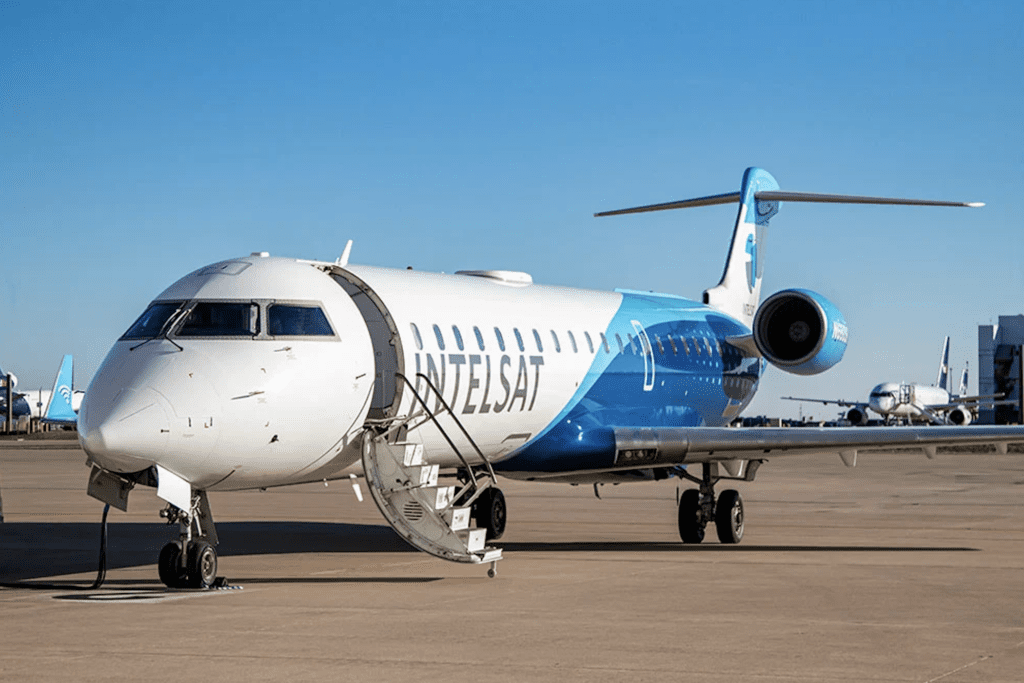
Alaska Airlines plans to upgrade its E175 regional jets with streaming-fast satellite Wi-Fi in partnership with Intelsat. (Photo: Alaska Airlines/Intelsat)
Alaska Airlines just announced that it plans to be the first global airline to offer high-speed Wi-Fi on regional jets. The airline chose Intelsat’s newest satellite Wi-Fi technology that uses an electronically steered array (ESA). The latest system from Intelsat has the capability to communicate with new Low Earth Orbit (LEO) satellites in addition to traditional geostationary (GEO) satellites.
Intelsat’s new system will first be utilized on Alaska’s sister airline, Horizon Air, early next year. Throughout 2024 and 2025, the system will be rolled out across Alaska Airlines’ fleet of regional jets—including those operated by the airline’s partner, SkyWest.
Intelsat is also installing its satellite Wi-Fi technology across the majority of Alaska Airlines’ mainline fleet. The airline shared in its announcement that it is on track to provide its entire fleet with consistent Wi-Fi—fast enough to enable streaming—by 2026.
Dave Bijur, SVP of Commercial at Intelsat, commented, “With Alaska, Intelsat brings a new IFC solution that’s especially well-suited to regional jets,” in a statement provided to Avionics International.
“By using both LEO satellites from OneWeb, in combination with Intelsat’s own fleet of GEO satellites, we can deliver the most consistent, reliable, streaming-quality inflight internet experience to airlines and their guests,” Bijur continued. “We are honored to be upgrading Alaska’s regional jet fleet with this new 90-pound antenna that isn’t just fast—it’s also a weight- and drag-saver.”
The ESA utilized by Intelsat’s new system enables easier maintenance due to the fact that it is a lightweight antenna without moving parts. The ability to communicate with LEO satellites at 300 miles from the Earth’s surface gives Intelsat’s system stronger connectivity and lower latency. Greater coverage is particularly valuable across the remote areas in Alaska.
“With an additional $25 million investment, this upgrade represents a major step forward in the travel experience for our guests, enabling higher speeds and more coverage in the air, particularly across areas in the state of Alaska,” the airline shared in the announcement.

An aerial view of Alaska (Photo: NASA’s Earth Science Project Office [ESPO])
Sangita Woerner, senior vice president of marketing and guest experience for Alaska Airlines, commented on the selection of Intelsat’s system. Woerner remarked, “Intelsat’s new system will give our guests the peace of mind that no matter whether it’s a short flight or longer journey, there will be reliable, affordable and convenient Wi-Fi.”
“With the growth in remote work, we know staying connected at 34,000 feet is more important than ever,” Woerner added.
Virgin Australia is another airline that has incorporated Intelsat’s satellite connectivity technology into its fleet. In October, Virgin Australia announced that the 2Ku satellite connectivity solution from Intelsat would be installed on its existing fleet of Boeing 737 NG aircraft as well as future 737 MAX aircraft.